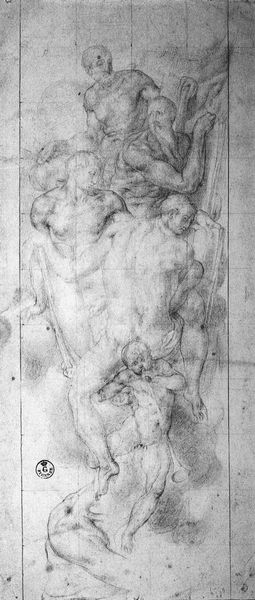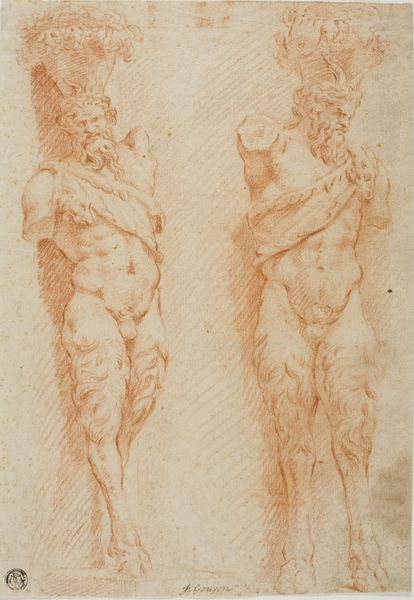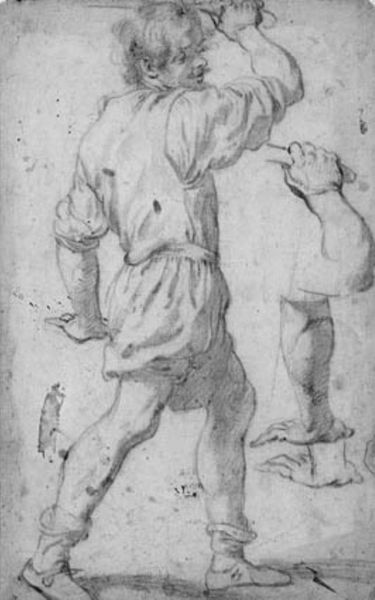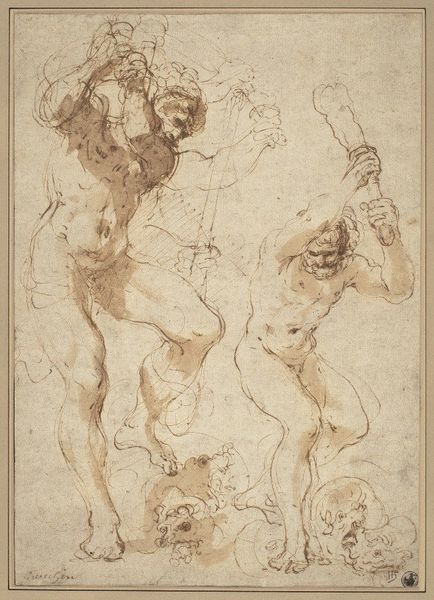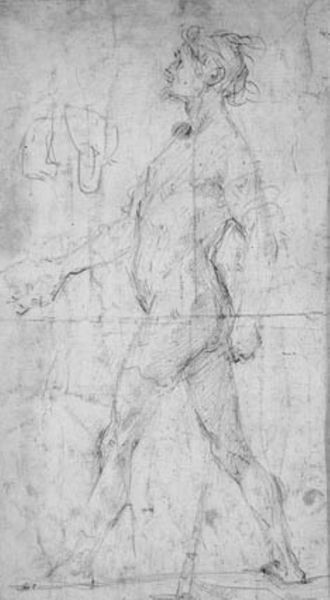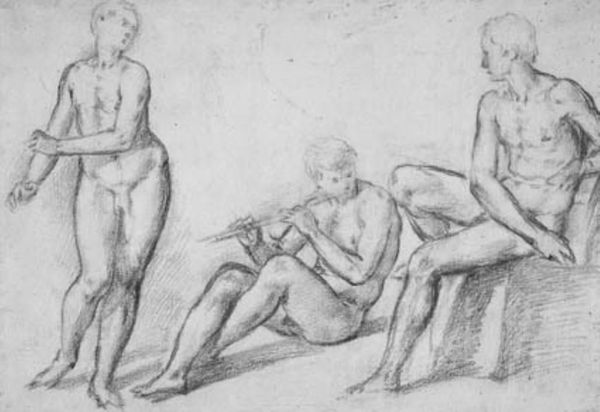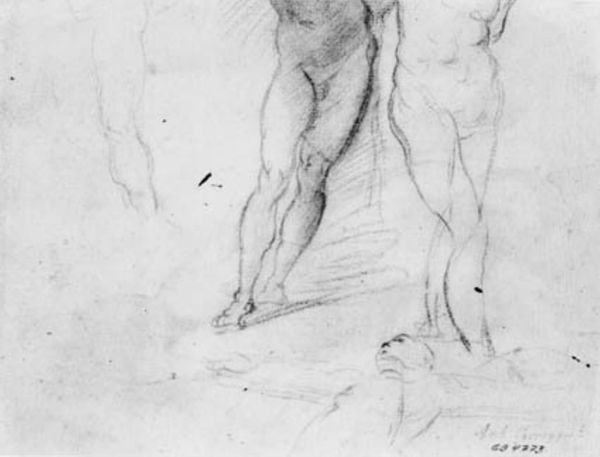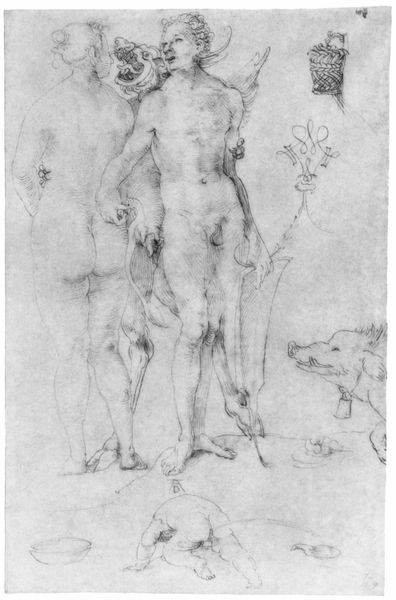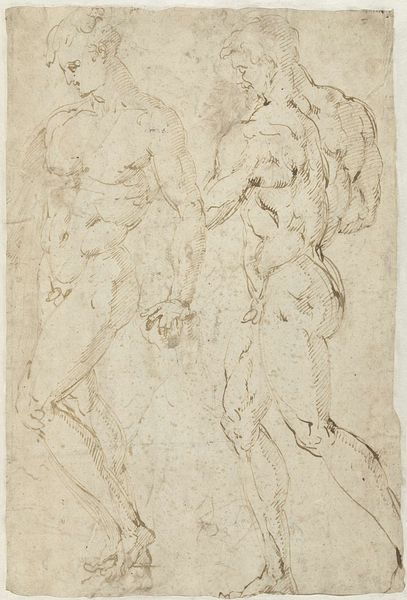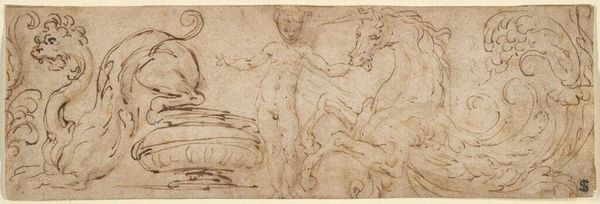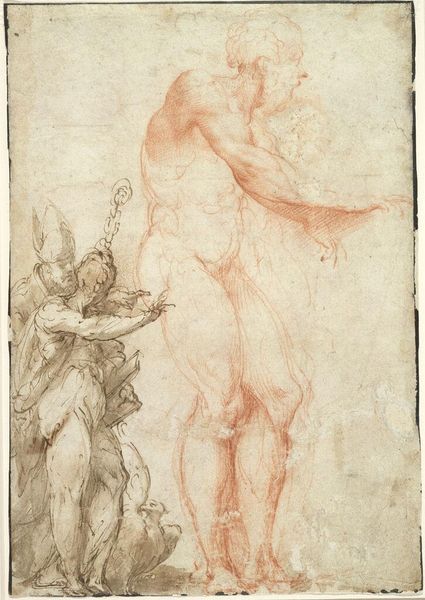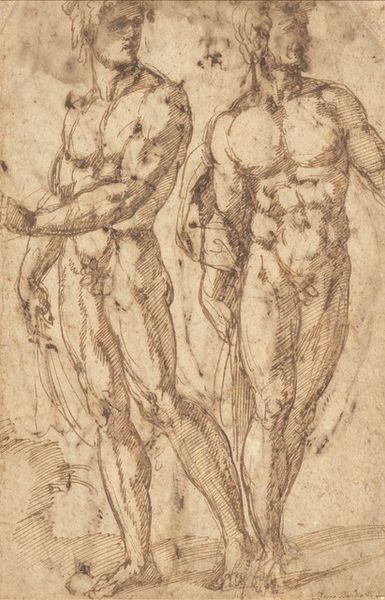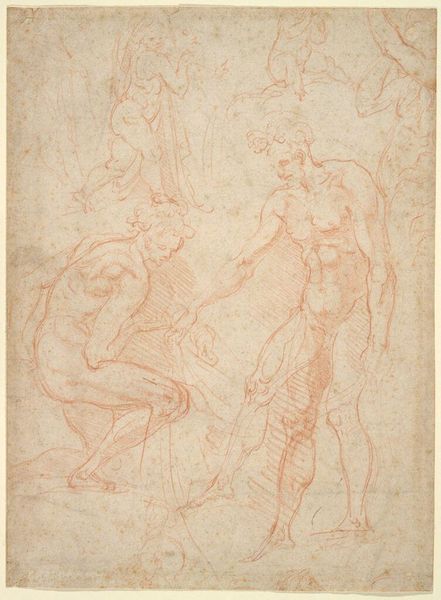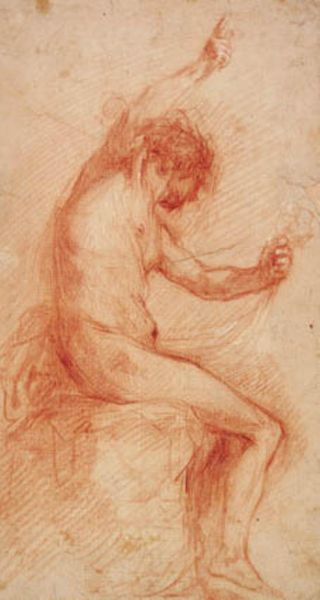
drawing, pencil
#
portrait
#
pencil drawn
#
drawing
#
charcoal drawing
#
mannerism
#
figuration
#
pencil
Dimensions: 269 mm (height) x 234 mm (width) (bladmaal)
Curator: Here we have Bernardino Poccetti’s "Two views of a statuette of a young man," dating from the late 16th or early 17th century, an arresting study rendered in pencil. What strikes you first? Editor: Immediately, a sense of detached observation. The multiple viewpoints create a sense of objective study. The artist’s dispassionate depiction feels very detached. Curator: That detachment is central to its purpose. Notice how Poccetti captures not just the figure, but also varying angles and light. This wasn’t meant for public display; it was likely an academic exploration, echoing classical ideals but interpreted through the lens of Mannerism. Consider what the figure represents to Renaissance society—beauty, ideal form, and the height of masculine virtue. Editor: But doesn’t that very idealism serve to reinforce existing power structures? This “perfected” male form was exclusive, often tied to wealth and privilege. It presents a limited and quite toxic, I'd argue, model of aspiration. Think of the male gaze, but here directed inward, for self-contemplation and idealization, reinforcing societal expectations of performance. Curator: Precisely! The statuette itself serves as an ideal – a symbol. Its permanence contrasted sharply with human beings. By drawing two viewpoints, Poccetti attempts to grasp and contain this ideal. But, how does the artist make his individual mark? The Mannerist style distorts proportion, adding emotional intensity and subjectivity where it was not expected. It invites us to acknowledge artifice even in pursuit of the ideal. Editor: Though I agree with what you are saying about Mannerism subverting the ideal to some degree, there is still the imposition of control through rendering. Think about the history of anatomical studies during the Renaissance: Even what appeared as pure observation involved exerting a form of domination over the body being drawn. This, even with its stylistic flair, replicates that power dynamic. Curator: An astute observation. I’m captivated how Poccetti encourages a layered reading: simultaneously celebrating classical standards of beauty while complicating those concepts through both artistic practice and subtle deviation. Editor: It leaves you questioning who is this image truly serving and to what end, and I value this image for how it generates dialogue between intention and execution.
Comments
No comments
Be the first to comment and join the conversation on the ultimate creative platform.
